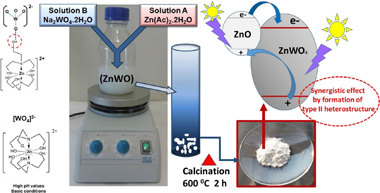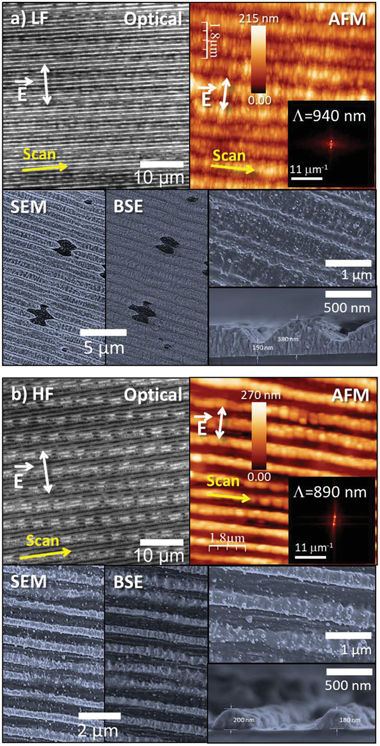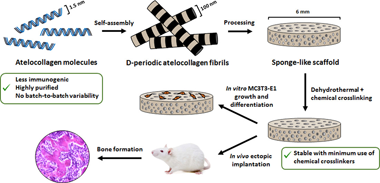Artículos SCI
2021
2021
Fotocatálisis Heterogénea: Aplicaciones
Sol-gel synthesis of ZnWO4-(ZnO) composite materials. Characterization and photocatalytic properties
Jaramillo-Páez, C., Navío, J.A., Puga, F., Hidalgo, M.C.Journal of Photochemistry & Photobiology, A: Chemistry, 404 (2021) 112962
Show abstract ▽

ZnWO4 based powder photocatalyst have been successfully prepared by calcining a co-precipitated precursor (ZnWO) obtained from aqueous Zn2+ and WO4 2− solutions at pH = 7, without surfactants addition. The as-formed sample was characterized by XRD, N2-absorption, SEM, TEM, DRS and XPS. Both techniques, XRD and XPS results showed that prepared sample corresponds to a crystalline, Zn-enriched composition, ZnWO4 indicating the formation of a ZnWO4-(ZnO) composite, whit ca. 10 wt.-% of ZnO confirmed by XRF analysis. Photocatalytic activities towards degradation of Rhodamine B (RhB), Methyl Orange (MO) and Phenol, under UV-illumination, was investigated not only by monitoring the percentages of conversion of substrates, but also by estimating the corresponding percentages of mineralization that accompany the photocatalytic process. Comparative substrateconversion rates estimated per surface area unit of catalyst, showed that the activity for ZnWO4-(ZnO) composite is similar to that for TiO2(P25), at least for MO and RhB, and even higher that for TiO2(P25) in respect to phenol conversion. By adding TEA to the synthesis procedure, a composite named as ZnWO4-ZnO-(pH = 10)-600 is generated, which has a higher proportion of ZnO (ca. 39 %) and superior specific surface area than the so-called ZnWO4-(ZnO) sample. Furthermore, the photocatalytic degradation of MO using the former material indicates that it is superior to ZnWO4-(ZnO) and even that TiO2(P25) itself under the same operational conditions.
Enero, 2021 | DOI: 10.1016/j.jphotochem.2020.112962
Nanotecnología en Superficies y Plasma
Physicochemical surface analysis and germination at different irrigation conditions of DBD plasma‐treated wheat seeds
Molina, R; Lalueza, A; Lopez-Santos, C; Ghobeira, R; Cools, P; Morent, R; de Geyter, N; Gonzalez-Elipe, ARPlasma Processes and Polymers, 18 (2021) e2000086
Show abstract ▽
Plasma treatment is increasingly being explored as an effective presowing treatment improving seed germination. This study examines the synergetic effect of the irrigation condition and the physicochemical surface properties of wheat seeds subjected to atmospheric dielectric barrier discharge plasma activation on their water uptake and germination. Extensive surface analysis revealed a remarkably enhanced wettability of plasma-treated seeds due to the insertion of oxygen-containing functionalities on their surface. However, long plasma exposures damaged the outermost layers of the pericarp due to a pronounced oxidative etching effect. Although the seed germination capacity was not affected by the plasma treatments, short plasma exposures were shown to enhance water uptake and accelerate seed germination, especially under water-scarcity conditions.
Enero, 2021 | DOI: 10.1002/ppap.202000086
Nanotecnología en Superficies y Plasma
Anisotropic Resistivity Surfaces Produced in ITO Films by Laser-Induced Nanoscale Self-organization
Lopez-Santos, C; Puerto, D; Siegel, J; Macias-Montero, M; Florian, C; Gil-Rostra, J; Lopez-Flores, V; Borras, A; Gonzalez-Elipe, AR; Solis, JAdvanced Optical Materials, 9 (2021) 2001086
Show abstract ▽

Highly anisotropic resistivity surfaces are produced in indium tin oxide (ITO) films by nanoscale self-organization upon irradiation with a fs-laser beam operating at 1030 nm. Anisotropy is caused by the formation of laser-induced periodic surface structures (LIPSS) extended over cm-sized regions. Two types of optimized structures are observed. At high fluence, nearly complete ablation at the valleys of the LIPSS and strong ablation at their ridges lead to an insulating structure in the direction transverse to the LIPSS and conductive in the longitudinal one. A strong diminution of In content in the remaining material is then observed, leading to a longitudinal resistivity rho(L) approximate to 1.0 omega center dot cm. At a lower fluence, the material at the LIPSS ridges remains essentially unmodified while partial ablation is observed at the valleys. The structures show a longitudinal conductivity two times higher than the transverse one, and a resistivity similar to that of the pristine ITO film (rho approximate to 5 x 10(-4) omega center dot cm). A thorough characterization of these transparent structures is presented and discussed. The compositional changes induced as laser pulses accumulate, condition the LIPSS evolution and thus the result of the structuring process. Strategies to further improve the achieved anisotropic resistivity results are also provided.
Enero, 2021 | DOI: 10.1002/adom.202001086
Materiales para Bioingeniería y Regeneración Tisular
Sponge-like processed D-periodic self-assembled atelocollagen supports bone formation in vivo
Borrego-Gonzalez, S; Rico-Llanos, G; Becerra, J; Diaz-Cuenca, A; Visser, RMaterials Science & Engineering C-Materials for Biological Applications, 120 (2021) art.111679
Show abstract ▽

Fibrous biopolymeric collagen extracted from animal tissues has been widely used for fabricating matrices for bone tissue engineering (BTE). However, animal extracted collagens can trigger immune reactions when implanted in vivo and the presence of native crosslinks leads to batch-to-batch variability. Atelocollagen, a monomeric form of collagen, is free of telopeptides, which are mainly responsible for the immunogenicity of collagen, and can self-assemble in vitro to obtain fibrils with the characteristic D-periodic staining pattern of native collagen. However, atelocollagen-based biomaterials have not extensively been studied and, hence, their suitability for BTE remains relatively unexplored. Besides, to stabilize collagen biomaterials, chemical and physical crosslinking are used, although chemical agents are cytotoxic while the physical methods yield a less effective crosslinking. A combination of physical and chemical crosslinking is a suitable alternative that has rarely been tested in BTE programs. In this work, a sponge-like biomaterial (DCol-S) was processed from D-periodic self-assembled atelocollagen and its stabilization was studied using the combination of a dehydrothermal treatment (DHT) and minimal glutaraldehyde (GTA) exposition crosslinking, to increase the resistance to degradation of the scaffold without a major effect on the biomaterial structure. The microstructural features of the final sponges were characterised and compared to a commercial biomaterial processed from native bovine collagen (Helistat (R), Integra Lifesciences, NJ, USA), demonstrating that a D-periodic nanostructure was obtained and maintained after processing of the sponges. MC3T3-E1 preosteoblast adhesion, proliferation and differentiation assays in vitro showed that DCol-S is biocompatible. Furthermore, intramuscular implantation of the biomaterials loaded with rhBMP-2 revealed that the double-crosslinked sponges were able to support ectopic bone formation, while sponges stabilised only with the DHT treatment were not. Altogether, these findings show that atelocollagen-based sponges stabilised with a DHT treatment followed by a mild GTA crosslinking are a suitable alternative to polymeric extracted collagen for BTE applications.
Enero, 2021 | DOI: 10.1016/j.msec.2020.111679
Fotocatálisis Heterogénea: Aplicaciones
Photocatalytic activity of ZnO nanoparticles and the role of the synthesis method on their physical and chemical properties
Uribe-Lopez, MC; Hidalgo-Lopez, MC; Lopez-Gonzalez, R; Frias-Marquez, DM; Nunez-Nogueira, G; Hernandez-Castillo, D; Alvarez-Lemus, MAJournal of Photochemistry & Photobiology, A: Chemistry, 404 (2021) 112866
Show abstract ▽

In the present study, we report on the effect of the synthesis method in the photoactivity of ZnO-NPs. The nanoparticles were prepared by precipitation and sol-gel procedures using zinc nitrate and zinc (II) acetylacetonate as ZnO precursors, respectively. The obtained samples were named as ZnO-PP (precipitation method) and ZnO-SG (sol-gel method). The powders were calcined at 500 degrees C and further characterized by Fourier Transform Infrared spectroscopy, X-ray Powder Diffraction, N-2 adsorption, thermal analysis, Diffuse Reflectance UV-Vis spectroscopy, and Electron Microscopy. Both methods of synthesis lead to formation of pure ZnO with hexagonal-wurtzite crystalline structures with average crystallite sizes similar to 30 nm. The specific surface area was affected by the synthesis method, since SBET values were 5 m(2)/g and 13 m(2)/g for sol-gel and precipitation method, respectively. The electron microscopy revealed significant changes in morphology for the obtained nanoparticles, as sol-gel directed the hexagonal rod-like geometries (similar to 50 nm in diameter) while quasi-spherical nanoparticles (similar to 100 nm in diameter) were formed using precipitation method. Photocatalytic activity was estimated by degrading phenol (50 ppm) as probe molecule under UVA irradiation (lambda = 356 nm), the results demonstrated that ZnO-PP reached 100 % of degradation after 120 min and 90 % of the pollutant was mineralized, whereas for ZnO-SG the results were 80 % and 48 % respectively. Fluorescence test using terephthalic acid (TA) demonstrated higher formation of OH center dot radicals for ZnO synthesized by precipitation method, which could explain the higher photodegradation and mineralization observed. These results support that even slight differences in physical and chemical properties of ZnO, have a significant impact on the photocatalytic performance of such nanoparticles.
Enero, 2021 | DOI: 10.1016/j.jphotochem.2020.112866
- ‹ anterior
- 87 of 410
- siguiente ›














